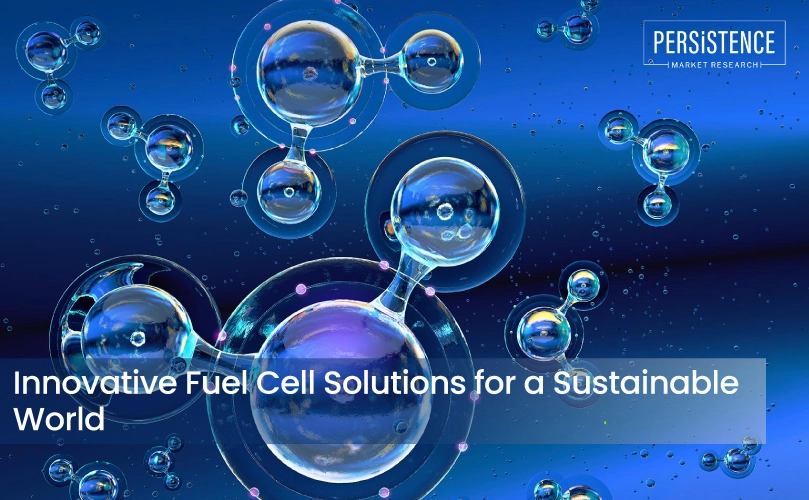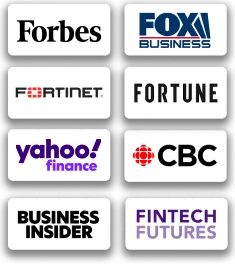- Blog
- Fuel Cell Technology 2025
Innovative Fuel Cell Solutions for a Sustainable World
Published On : 3 Feb 2025
The ground-breaking technology known as fuel cells uses hydrogen to create energy while only releasing heat and water. They are utilized in many different applications, including supplying backup power for buildings and telecommunications, as well as powering automobiles and industrial machinery. They provide a sustainable substitute for fossil fuels.

Fuel cell technology has changed dramatically during the last decade due to government regulations, cost reductions, and material breakthroughs. Fuel cells are currently being used by important industries including shipping, aviation, and the automotive industry to meet worldwide net-zero carbon targets.
A Few Benefits of Fuel Cells
- Environmental Sustainability Pioneering a Greener Future
Fuel cells, when powered by green hydrogen sourced from renewable energy, emit zero pollutants. This makes them a pivotal technology in the quest for global decarbonization, reducing our carbon footprint and combating climate change.
- Maximizing Energy Output
Fuel cells excel in converting chemical energy directly into electrical energy with remarkable efficiency. Unlike traditional combustion engines, which lose a lot of energy as heat, fuel cells achieve higher efficiency levels, ensuring more energy is harnessed from the same amount of fuel.
- Reducing Fossil Fuel Dependency
Fossil fuel imports are reduced by fuel cells, which use hydrogen as their main component. This change fosters energy independence by encouraging the use of locally generated renewable energy while also improving energy security.
- Powering a Diverse Range of Industries
Fuel cells are incredibly adaptable, finding applications in everything from portable electronic devices to heavy-duty transportation. Their versatility allows them to meet the energy needs of various sectors, making them a valuable asset in the transition to a sustainable energy future.
Innovations Driving Demand for Fuel Cell Technology
- Cost Reductions through Advanced Materials
Innovations in catalyst materials, such as reducing or replacing platinum, have lowered fuel cell costs. Advances in membrane electrode assemblies and electrolyzers also contribute to improved efficiency and affordability.
- Hydrogen Infrastructure Development
Governments and private entities are investing in hydrogen refueling stations. For instance, Japan’s ‘Basic Hydrogen Strategy’ aims to deploy 900 stations by 2030, supporting the adoption of hydrogen vehicles. Europe’s Hydrogen Mobility initiative is similarly advancing infrastructure.
- New Applications
The maritime and aviation sectors are exploring hydrogen fuel cells to power ships and aircraft. Companies like Airbus are developing hydrogen-based propulsion systems, aiming to launch commercial hydrogen-powered planes by 2035.
Notable Examples of Global Impact
- Energy Sector
Fuel cells are increasingly used in grid stabilization and backup power. For example, Plug Power’s partnership with Amazon and Walmart showcases the viability of fuel cells in logistics and supply chain operations.
- Transportation
Toyota’s Mirai and Hyundai’s Nexo have demonstrated the commercial viability of fuel cell electric vehicles (FCEVs). Additionally, initiatives like the deployment of hydrogen-powered buses in South Korea and China illustrate fuel cells' growing presence in public transit.
- Industrial Applications
In steel manufacturing, green hydrogen is replacing coal in the Direct Reduced Iron (DRI) process, cutting emissions. Major steelmakers in Europe and Asia are investing heavily in this transition.
Challenges and Solutions
- Infrastructure Limitations
Building a comprehensive hydrogen refueling network is costly and time-consuming. Collaborative public-private partnerships, like those in Germany and California, aim to address this gap by accelerating station deployment.
- High Initial Costs
Although fuel cell technology costs are decreasing, they remain higher than traditional energy systems. Continued investment in research and development and economies of scale are expected to make fuel cells more competitive.
- Public Awareness
Misconceptions about hydrogen safety and technology hinder adoption. Educational campaigns and transparent safety demonstrations are critical to fostering public trust.
Recent Developments in Fuel Cells
- Plug Power’s Green Hydrogen Projects: Plug Power has invested in green hydrogen production plants in the U.S., aiming for a capacity of 500 tons per day by 2025. These projects will support fuel cell adoption across industries.
- Hyundai’s Hydrogen-Powered Trucks: Hyundai launched its XCIENT Fuel Cell trucks in Europe, targeting heavy-duty transportation markets.
- Airbus’ Zero-Emission Aircraft: Airbus has been testing hydrogen fuel cell technology to power next-generation aircraft, with plans for commercial adoption by the mid-2030s.
Fuel Cells to Augment Green Energy Revolution in Future
Fuel cells mark a significant change toward sustainable energy and transportation systems; they are not just a new technology. Fuel cells have the potential to spearhead the shift towards a cleaner future by tackling important issues like pollution, efficiency, and energy independence. However, their success hinges on continued innovation, infrastructure development, and supportive policies.
The idea of a hydrogen-powered economy is taking shape as international investments increase and technical advancements persist. Fuel cells are a key component of the global energy revolution because of their ability to alter a variety of industries. Fuel cells have a bright future thanks to cooperation between governments and companies, which promises a more robust and environmentally friendly world.
Industry Report

Request Report Sample
Your privacy is important to us; your data is secure
Contact Us
Latest Reports
-
Piezoresistive Pressure Sensor Market by Sensor Type (Absolute, Gauge, Differential, Sealed), Pressure Range (Low Pressure (<10 kPa), Medium Pressure (10 kPa – 1000 kPa), High Pressure (>1000 kPa)), End-Use Industry (Automotive & Transportation, Industrial Manufacturing, Healthcare, Aerospace & Defense, Electronics) and Regional Analysis for 2026-2033
-
Aquarium Accessories Market by Product Type (Filtration Items, Lights & Hoods, Temperature Control Systems, Others), End-User (Residential, Commercial), Distribution Channel (Online, Offline), and Regional Analysis for 2026-2033
-
Oxygen Therapy Market by Product Type (Compressed Oxygen, Concentrated Oxygen, Liquid Oxygen), Disease (Respiratory Disorder, Cardiovascular Disease, Sleep Apnea, Pneumonia), End-User (Hospitals, Home Healthcare, Clinics), and Regional Analysis for 2026-2033
-
Air Curtains Market by Product Type (Non‑Recirculating, Recirculating, Heated, Others), Airflow Capacity (Up to 500 m³/h, 500–1000 m³/h, 1000–1500 m³/h, Above 1500 m³/h), Application (Commercial, Industrial, Residential, Others), and Regional Analysis for 2026–2033
-
Personalized Stationery Market by Product type (Storage & Filling Products, Paper-Based Products, Drawing & Writing Instruments, Accessories, Bags, Others), Application (Educational Institutes, Corporate Offices, Personal Use, Hospitals, Others), and Regional Analysis for 2026–2033
